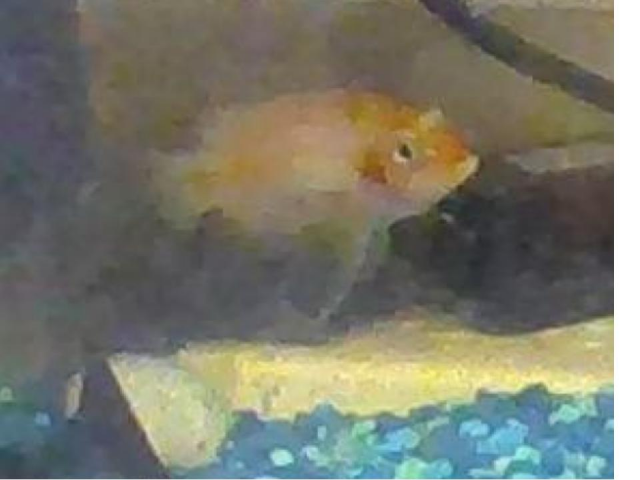Hi Shane,
When you say they're a lot different, how so? A couple pictures or videos would be nice even if it's just with a webcam.
My male is probably pushing about the same size as yours. I've had them almost a year now so I don't see them growing much bigger. However, in typical acara fashion, they will definitely turn violent with each other if they don't have adequate space. As you can see in the videos, I gave my pair an entire 55 gallon. I eventually had to remove the pair because they had become so aggressive toward me that the male was jumping out every time I opened the lid and I didn't want him to kill himself. They're now back with the group.
Mine spawn a lot, but they never got past wriggler stage when they were with the group. For that to happen I had to remove the other fish and the pair got it right on the first try afterward.
I didn't have any difficulty with these fry. I fed newly hatched brine shrimp from the day they went free-swimming. My water parameters are nothing special; they're in pH 7.6 with a kH of 7 and a gH of 5, usually around TDS 200 - 250ppm from the tap. The heater in that tank has always run hot, so they've probably been maintained at 85F or so. This is hotter than I keep most acaras but it hasn't negatively affected them. However it does make them very active and may contribute to how aggressive they are.
Water quality can be an issue with small fry so I'd make sure the tank is clean. The extra volume of a larger tank would help with that. Otherwise you may have to do larger and/or more frequent water changes to stay on top of it. I started 50% water changes once a week once they hit a week old, and as they grew and I fed more I increased that to 90% changes every couple of days. This lessens the bacterial loads in the tank, removes the dissolved organics and nitrates from the water, and replenishes trace elements and minerals which the fish will need for growth. If they deplete these from the water and you don't replenish them fast enough the fish will have bone and fin growth issues.
I had a similar frustrating experience with Heros severus fry. The parents seemed healthy, spawned frequently, and the fry would hatch fine and act normal for the first couple of weeks, then they'd turn black and start dying. I tried everything -- new foods, different water, treating the parents for parasites and internal worms/flagellates, flukes... nothing ever worked. I never figured it out. One of the most maddening things I've ever experienced as a fishkeeper.
When you say they're a lot different, how so? A couple pictures or videos would be nice even if it's just with a webcam.
My male is probably pushing about the same size as yours. I've had them almost a year now so I don't see them growing much bigger. However, in typical acara fashion, they will definitely turn violent with each other if they don't have adequate space. As you can see in the videos, I gave my pair an entire 55 gallon. I eventually had to remove the pair because they had become so aggressive toward me that the male was jumping out every time I opened the lid and I didn't want him to kill himself. They're now back with the group.
Mine spawn a lot, but they never got past wriggler stage when they were with the group. For that to happen I had to remove the other fish and the pair got it right on the first try afterward.
I didn't have any difficulty with these fry. I fed newly hatched brine shrimp from the day they went free-swimming. My water parameters are nothing special; they're in pH 7.6 with a kH of 7 and a gH of 5, usually around TDS 200 - 250ppm from the tap. The heater in that tank has always run hot, so they've probably been maintained at 85F or so. This is hotter than I keep most acaras but it hasn't negatively affected them. However it does make them very active and may contribute to how aggressive they are.
Water quality can be an issue with small fry so I'd make sure the tank is clean. The extra volume of a larger tank would help with that. Otherwise you may have to do larger and/or more frequent water changes to stay on top of it. I started 50% water changes once a week once they hit a week old, and as they grew and I fed more I increased that to 90% changes every couple of days. This lessens the bacterial loads in the tank, removes the dissolved organics and nitrates from the water, and replenishes trace elements and minerals which the fish will need for growth. If they deplete these from the water and you don't replenish them fast enough the fish will have bone and fin growth issues.
I had a similar frustrating experience with Heros severus fry. The parents seemed healthy, spawned frequently, and the fry would hatch fine and act normal for the first couple of weeks, then they'd turn black and start dying. I tried everything -- new foods, different water, treating the parents for parasites and internal worms/flagellates, flukes... nothing ever worked. I never figured it out. One of the most maddening things I've ever experienced as a fishkeeper.




